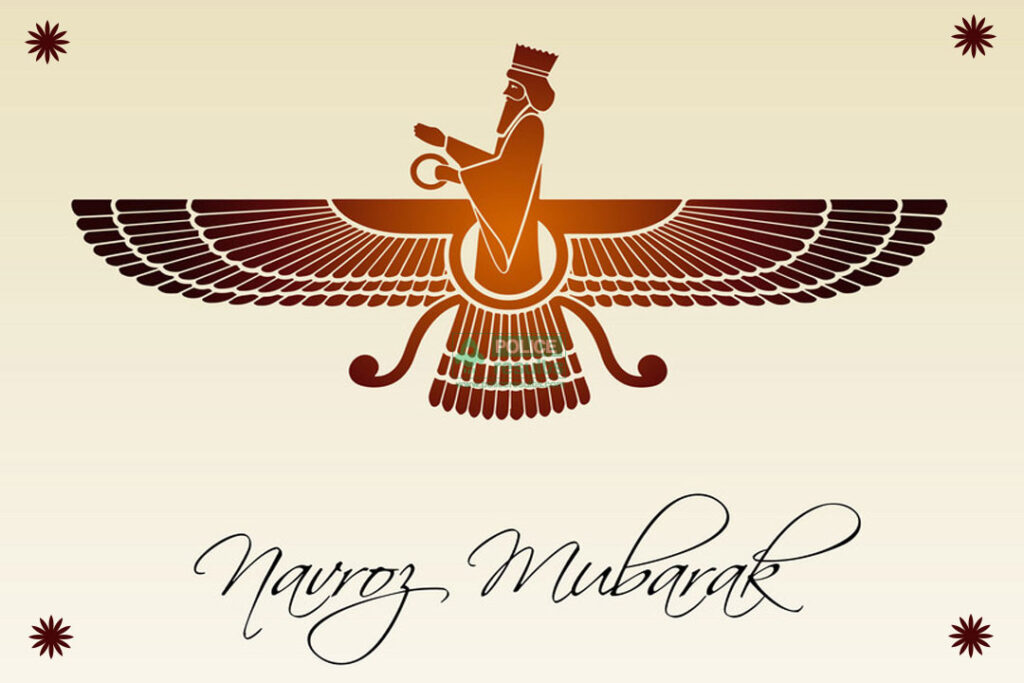
On the last day 16 of august the parsi community of india celebrated the Navroz, your new year, the day she commits herself to renewing hope. Homes are neatly arranged, individuals wear new clothes, exchange gifts and make donations to charities. Nothing much different from Christian Christmas. Tradition of 3000 years, the parsi New Year holiday was created by the prophet Zoroaster, according to legend.
But, who are zoroastrians and parsis?
Zoroastrianism is considered the oldest of the known monotheistic religions, although there are controversies in this regard. It started with the revelations of Zarathustra, whom the Greeks called Zoroaster. There is not much information about your life; believed to have been born in Sogdiana, in the kingdom of Bactria or Karezmia, region that now covers eastern Iran, Afghanistan and Turkmenistan.
It is not equally clear when he lived. Most linguistic and archaeological evidence points to the period between 1500 e 1200 AEC. Some scholars believe, however, that he was a contemporary of Ciro, the big, who lived in the 6th century BCE and founded the Achaemenid empire in Persia.
The well-known story of Zoroastro is full of legends that would demonstrate its “special” nature. According to them, at birth, the child did not cry; on the contrary, riu loudly. In the village there was a priest who realized that that boy would become a revolutionary of human thought and weaken the power of “patrons” of religions. Searched, So, his father and told him that this fact bodes ill for the community. He added that the child would have a demon inside him. Faced with his father's unbelief, the priest imposed, So, a test: lit a big fire, and in front of everyone, the boy shot her. As he suffered no damage, the priest was confused.
Zoroaster was taken, So, into a narrow valley and placed in the path of a herd. The first ox noticed the boy and stood over him, protecting you; the baby didn't suffer a single scratch. The priest devised another plan: Zoroaster was taken to the den of a wolf that, instead of devouring it, took care of him until his mother came to pick him up. Faced with so many wonders the priest, embarrassed, moved from the village.
In youth, Zoroastro wondered who was the author of the universe and humanity. One day, while meditating on the banks of a river, a being of immense beauty and wrapped in intense light appeared and told him that Ahura Mazda, the creator, had chosen him to announce the redemptive message for humanity. He then asked: “- because I? “. The answer was that Zoroastro had all the necessary qualities: good thoughts, words and actions. Returning home, he told what happened to him. His family believed his story, but the priests, fearful of losing their privileges, decided to end their life. He then ran off with twenty-two companions; wandered for several weeks, until they reach Bactria, present Afghanistan, where he lived until 77 years, when he was murdered by a priest while praying before the sacred fire.
Zoroastrianism has its foundations fixed in the Avesta that, just like the Bible, is a collection of sacred books that were written over a long period and in different languages. Recognizes the existence of two deities, representing respectively, the good – Ahura Mazda – and Evil – Arima. The clash between them, overcomes the divinity that represents the Good. Zoroastrians also believe in Paraiso, in the Resurrection, and at the Last Judgment. This belief came to influence the other monotheistic religions that emerged later, according to scholars. The symbol that represents Good is Fire, that the faithful consider the supreme element of purity. The flame – the light of God (Ahura Mazda) -, what does enlightened mind mean, should never be extinguished. The sacred fire is kept in the so-called Temple of Fire / “Fire Temple”. No ritual or ceremony is performed without the presence of this flame. In 2019, there were 167 Fire Temples in the world, of which 45 in Mumbai, 105 in the rest of India, e 17 In other countries.
Zoroastrianism was the most important religion on the planet for over a thousand years, and the “official” of the Persian empire, from near 630 BCE until the 7th century, when the Arabs invaded the region and converted the population to Islam.
And what is he today? Who are the Parsis?
When Islamic armies invaded Persia, between 636 e 651 THIS, many zoroastriastas emigrated to the Gujarat region, in India, among other destinations, to preserve their religious identity and escape persecution and forced conversion to Islam. Currently there are about 2,6 millions of zoroastriastas worldwide. The Parsis – “parsi’ is the term that means “Persian” in Gujarati - are those who settled in India. The exact date of immigration is unknown. According to tradition, they initially settled in Hormuz, no Persian Gulf, but finding themselves persecuted there, left for India. The first ones arrived in the 8th century and settled first in Diu, that would become a Portuguese warehouse in India, in the 16th century, but they soon moved to Gujarat, South, where they stayed for about 800 years as a small agricultural community.
However, after the trade agreement signed in the early 17th century between Emperor Mogul Jehangir and King James I, from England, the East India Company obtained the exclusive rights to reside and build factories in the Surat region, and in other areas of the Mogul empire. Many parsis, who until then lived in agricultural communities accepted the job opportunities offered to them and moved to the settlements run by the English. In 1668, the East India Company built a deep-water port off the coast of Mumbai and moved its headquarters from Surat there.
The Parsis accompanied her and soon started to occupy positions of trust in connection with the government and public works entities.. It was the beginning of the economic affluence of the community, that preserves it today. In the 18th and 19th centuries, Parsis emerged as “the most relevant people in India in educational matters, industrial and social ”. The community took the forefront of progress, accumulating vast fortunes. They have also become great welfare benefactors and patrons of various charities, as well as research.
Over the centuries since the first Zoroastrians arrived in India, Parsis have integrated into Indian society, keeping, However, or simultaneously developing, their own distinct customs and traditions and, therefore, your ethnic identity. This, in its turn, gave the community a very peculiar position: they are Indian in terms of nationality, language and history, but not typically Indian in terms of inbreeding, ethnicity or cultural practices, behavioral and religious.
Genealogical DNA tests carried out to determine the purity of the strain showed mixed results. A study supports the Parsi claim that they kept their Persian roots, avoiding marriage to local people. Actually, insofar as tradition prevents marriage outside religion / ethnicity, the definition of who is, and it's not, Parsi, is a matter of great controversy within the community. It is generally accepted that a Parsi is the person who: (a) is directly descended from the original Persian refugees, e (b) formally admitted to religion through the “navjote” ceremony (placement of the sacred thread / ”sacred thread”, that should be carried under clothes for the rest of your life). Conversion is not possible.
According to the India Census of 2011, exist 57. 264 parsis no country, only. According to the National Minorities Commission, there is a “variety of causes responsible for this constant decline in the community population”, the most significant being the absence of children and emigration. A slower birth rate than mortality is responsible for the rest: from 2001, parsis with more than 60 years represent 31% community. Only 4,7% community has less than 6 years old, what translates into 7 births per year per 1000 individuals. Demographic projections estimate that by the year 2021 this population will be only 23.000 people. Parsis will then no longer be considered as a community under Indian law, and will be classified as “tribe”.
However, this declining community is still responsible for some of India's greatest fortunes today, all committed to benevolence and support for scientific research and society. Many of the biggest Indian entrepreneurs are Parsis, Among the most internationally recognized are the Tata and Godrej clans.
In personal terms, in this minority are some of my best friends in life, indians, or not. Intellectual quality as well as character, of these individuals and their commitment and dedication to others was one of the main reasons why I became so attached to India, my “matrix”. They were script and guides!
NAVROZ MUBARAK!!!
